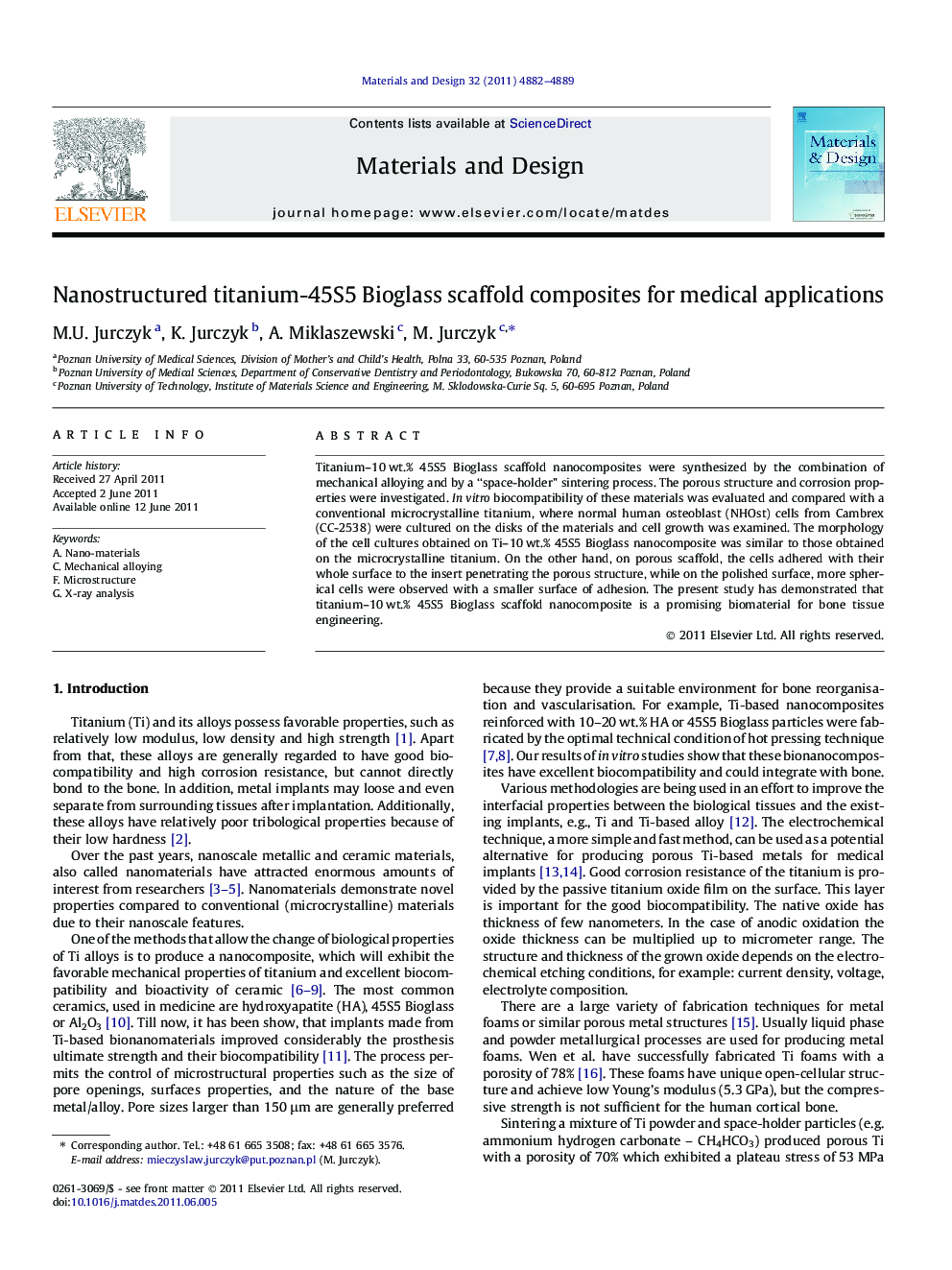| Article ID | Journal | Published Year | Pages | File Type |
|---|---|---|---|---|
| 831214 | Materials & Design (1980-2015) | 2011 | 8 Pages |
Titanium–10 wt.% 45S5 Bioglass scaffold nanocomposites were synthesized by the combination of mechanical alloying and by a “space-holder” sintering process. The porous structure and corrosion properties were investigated. In vitro biocompatibility of these materials was evaluated and compared with a conventional microcrystalline titanium, where normal human osteoblast (NHOst) cells from Cambrex (CC-2538) were cultured on the disks of the materials and cell growth was examined. The morphology of the cell cultures obtained on Ti–10 wt.% 45S5 Bioglass nanocomposite was similar to those obtained on the microcrystalline titanium. On the other hand, on porous scaffold, the cells adhered with their whole surface to the insert penetrating the porous structure, while on the polished surface, more spherical cells were observed with a smaller surface of adhesion. The present study has demonstrated that titanium–10 wt.% 45S5 Bioglass scaffold nanocomposite is a promising biomaterial for bone tissue engineering.
Graphical abstractIn this paper the authors show that nanostructured titanium–10 wt.% 45S5 Bioglass scaffold composites produced by the combination of mechanical alloying and by a “space-holder” sintering process opens new avenues and concepts for medical implants, providing benefits in all areas of medical device technology.Figure optionsDownload full-size imageDownload as PowerPoint slideHighlights► Scaffolds are more corrosion resistant than the microcrystalline titanium. ► Nanocomposite scaffolds display good biocompatibility. ► The mechanical properties are affected by the density of the material.
